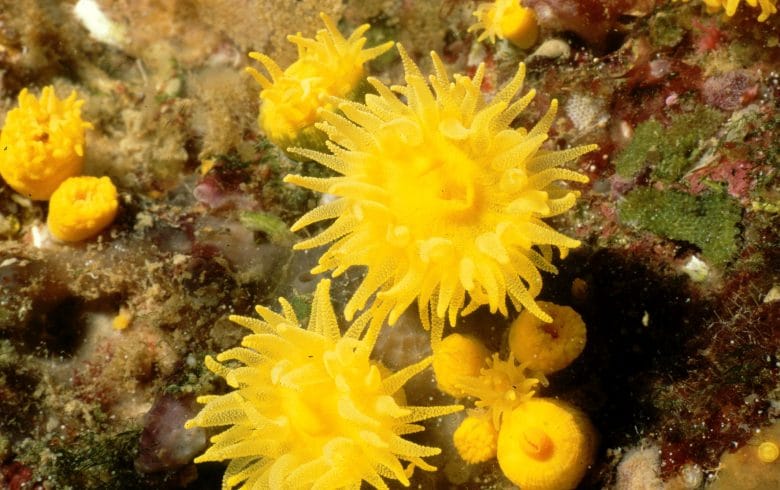
Sunset cup coral is bright yellow. It has a round skeleton that can grow to up to 17mm in diameter and 60mm high. The polyps on top measure up to 30mm. This animal is found attached to hard substrates. Sunset cup coral is very sensitive to light and lives under rocky overhangs, in cave mouths and on shady coralligenous drop-offs. It can be spotted just a few metres below the surface but mostly lives at depths of between 20 and 50m. It is found all over the Mediterranean and in the Atlantic up to the south of the British Isles.
Phylum: Cnidaria
Class: Anthozoa
Order: Scleractinia
Family: Dendrophylliidae
Scientific name: Leptopsammia pruvoti
French: Corail solitaire jaune
Spanish: Coral solitario amarillo
Italian: Corallo solitario giallo
German: Gelbe Nelkenkoralle






















